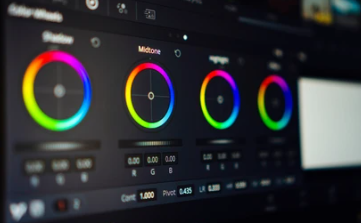How to Increase Saturation in After Effects

Color plays a vital role in storytelling and visual impact within your After Effects projects. Sometimes, however, footage or compositions can appear dull, lacking the richness and vibrancy you desire. Here's where understanding how to increase saturation in After Effects comes in handy. This article will explore various methods to achieve the perfect level of color intensity for your project.
Understanding Saturation
Before diving in, let's understand what saturation is. Imagine colors existing on a spectrum from grayscale (no saturation) to fully saturated (pure, vivid colors). Increasing saturation essentially pushes colors further along this spectrum, making them more intense and visually striking.
Methods to Boost Saturation
After Effects offers several ways to achieve your desired level of saturation. Here are some popular methods, along with their strengths and considerations:
1. Hue/Saturation Effect
This is the most straightforward approach. Add the Hue/Saturation effect to your layer in the Effects panel. The effect controls provide three sliders:
- Hue: Rotates the color wheel, allowing you to shift the overall color tint.
- Saturation: This is the key! Move the slider to the right to increase saturation and make colors more vivid. Be cautious, though, as overdoing it can lead to unrealistic or posterized colors.
- Lightness: Adjusts the overall brightness of the colors.
2. Selective Color Adjustment
For more targeted control, use the Selective Color effect. This effect allows you to adjust saturation for specific color ranges. Click the dropdown menu and choose a color range (e.g., Reds, Yellows). Adjust the Saturation slider to increase saturation for that specific color range. This technique is great for emphasizing certain colors within your composition.
3. Vibrance vs. Saturation
While similar, Vibrance and Saturation have slight differences. Saturation affects all colors equally. Vibrance, on the other hand, focuses on adjusting mid-tone colors while leaving highlights and shadows relatively untouched. This can be helpful for enhancing the overall richness of colors without drastically altering the image's natural look. You can find the Vibrance adjustment under the Levels effect.
4. Curves for Precision
The Curves effect offers a highly customizable approach to color correction. By manipulating the curves, you can selectively increase saturation for specific color channels (red, green, blue). This method provides more granular control than the Hue/Saturation effect, but requires a deeper understanding of color theory.
Advanced Techniques
Here are some additional methods to consider for specific scenarios:
- Channel Mixer: This effect allows you to swap and adjust the intensity of different color channels. It can be useful for creating unique color effects while boosting saturation in specific areas.
- Color Lookup Tables (LUTs): LUTs are presets that apply specific color grades to your footage. Many LUTs offer increased saturation while maintaining a balanced look. Experiment with different LUTs to find one that complements your project's style.
Remember
- Subtlety is Key: While boosting saturation can enhance visuals, going overboard can lead to unrealistic or unpleasant results. Start with subtle adjustments and gradually increase saturation until you achieve the desired effect.
- Balance is Important: Consider the overall color harmony in your composition. Increasing saturation in one area might require adjustments in other areas to maintain visual balance.
- Reference Images: Use reference images as a guide to achieve a specific look or color style. Compare your project to the reference and adjust saturation accordingly.
- Preview Often: Utilize the After Effects preview window to see the real-time effects of your saturation adjustments. This allows for fine-tuning before finalizing your project.
Conclusion
By mastering the art of increasing saturation in After Effects, you can breathe life into your projects and evoke specific moods and emotions through vibrant colors. Experiment with the techniques discussed in this article, and don't be afraid to explore further to develop your own unique approach to color correction. With practice and a keen eye, you'll transform your After Effects projects into visually stunning masterpieces!



